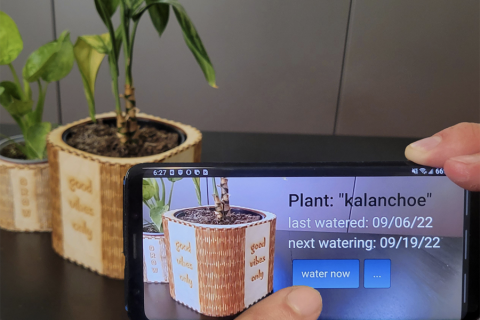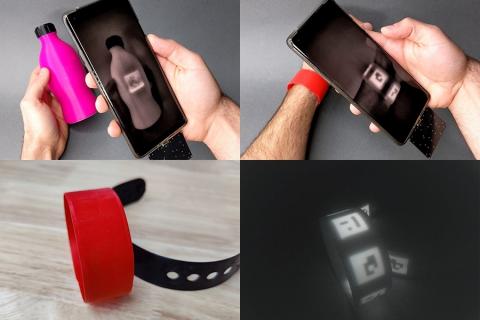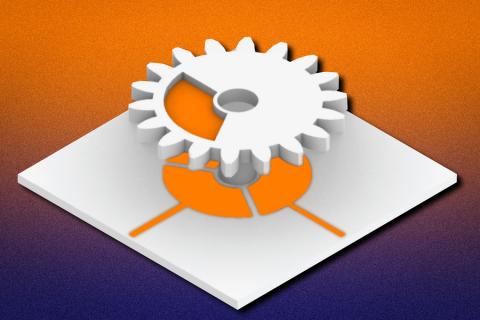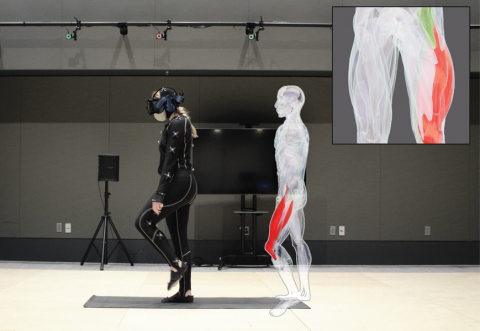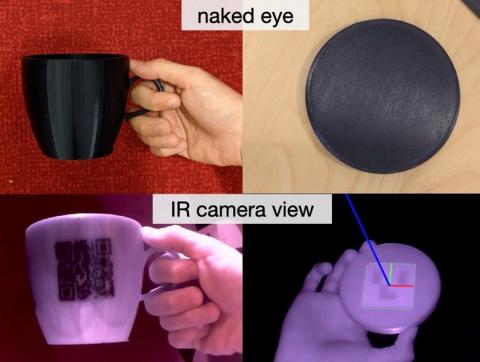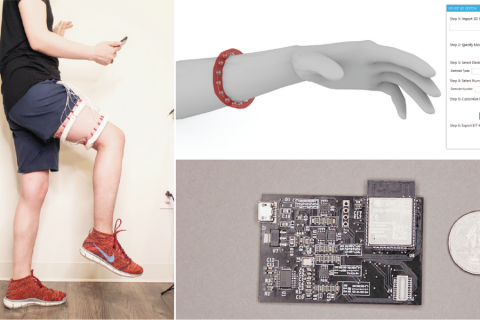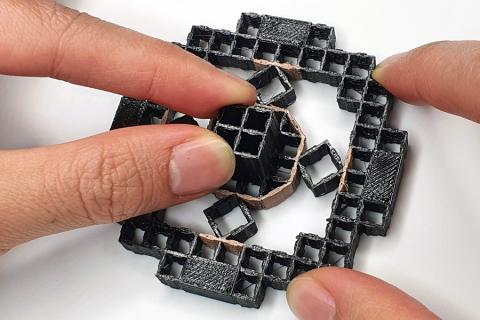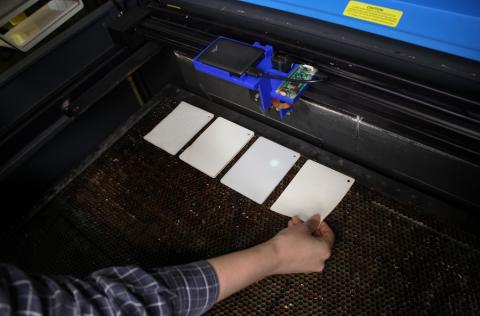StructCode, developed by MIT CSAIL researchers, encodes machine-readable data in laser-cut objects by modifying their fabrication features.
Stefanie Mueller
Invisible tagging system enhances 3D object tracking
Developed by MIT researchers, BrightMarkers are invisible fluorescent tags embedded in physical objects to enhance motion tracking, virtual reality, and object detection.
Toward more flexible and rapid prototyping of electronic devices
FlexBoard is a flexible breadboard that enables rapid prototyping of objects with interactive sensors, actuators, and displays on curved and deformable surfaces.
3D-printed revolving devices can sense how they are moving
A new system enables makers to incorporate sensors into gears and other rotational mechanisms with just one pass in a 3D printer.
MIT system “sees” the inner structure of the body during physical rehab
A system for monitoring motion and muscle engagement could aid the elderly and athletes during unsupervised physical rehabilitation for injuries or impaired mobility.
Invisible machine-readable labels that identify and track objects
An MIT team develops 3D-printed tags to classify and store data on physical objects.
Saving seaweed with machine learning
PhD candidate Charlene Xia is developing a low-cost system to monitor the microbiome of seaweed farms and identify diseases before they spread.
Making health and motion sensing devices more personal
An electrical impedance tomography toolkit lets users design and fabricate health and motion sensing devices.
Engineers create 3D-printed objects that sense how a user is interacting with them
Advance incorporates sensing directly into an object’s material, with applications for assistive technology and “intelligent” furniture.
Smart laser cutter system detects different materials
“SensiCut,” a smart material-sensing platform for laser cutters, can differentiate between 30 materials commonly found in makerspaces and workshops.


